Introduction to Continuous Monitoring in Home-Based Care
Continuous monitoring through remote patient monitoring (RPM) is revolutionizing home-based care by enabling real-time tracking of patient health outside traditional healthcare settings. This transformative approach improves chronic disease management, enhances patient safety, reduces healthcare costs, and supports personalized treatment plans. In this article, we explore the multifaceted benefits of continuous monitoring, its impact on health outcomes, cost reduction, technology innovations, and its pivotal role in modern healthcare management and hospital-at-home programs.
<!-- VIDEO:eyJsaW5rIjoiaHR0cHM6Ly93d3cueW91dHViZS5jb20vd2F0Y2g/dj1Sd1hmMTVpU0dBVSIsImltYWdlVXJsIjoiaHR0cHM6Ly9lbmNyeXB0ZWQtdGJuMC5nc3RhdGljLmNvbS9pbWFnZXM/cT10Ym46QU5kOUdjUjdKN0pNWmFtY0kyOVAzamloVUluT2pMOHpTdW00ZzVHVGE2Z05JelQzS0JscSZzIiwidGl0bGUiOiJXaGF0IEFyZSBUaGUgQmVuZWZpdHMgT2YgUmVtb3RlIFBhdGllbnQgTW9uaXRvcmluZyAuLi4iLCJzbmlwcGV0IjoiLi4uIE1vbml0b3JpbmcgaW4gaGVhbHRoY2FyZS4gVGhpcyBpbm5vdmF0aXZlIGFwcHJvYWNoIHV0aWxpemVzIC4uLiBoZWFsdGhjYXJlIHByb3ZpZGVycyB0byB0cmFjayBwYXRpZW50cycgaGVhbHRoIG1ldHJpY3MgZnJvbSBob21lLiBXZSAuLi4ifQ== -->Advantages of Continuous Monitoring in Home-Based Care
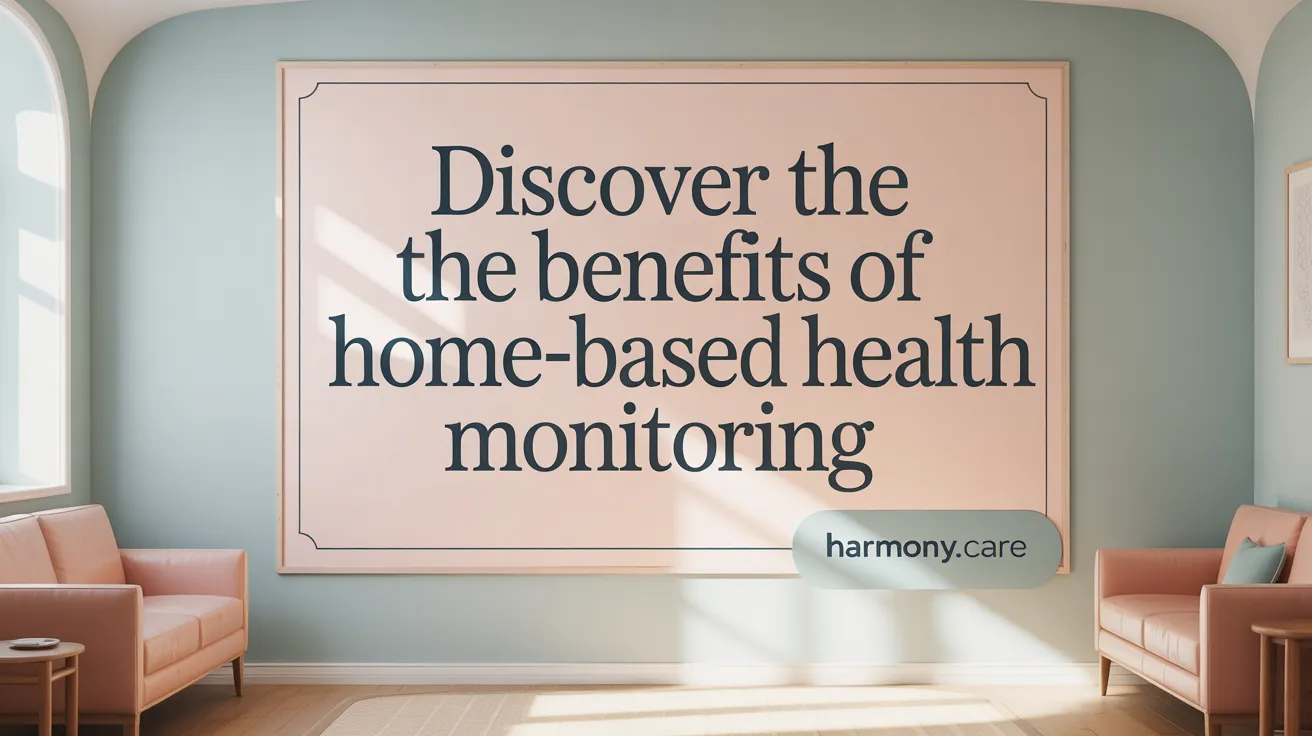
What are the advantages of continuous monitoring in home-based care?
Continuous monitoring in home-based care provides multiple benefits that enhance patient health and streamline healthcare delivery. One of the most significant advantages is early detection of health deterioration. Real-time data from wearable devices and sensors allows healthcare providers to identify early signs of complications, such as abnormal vital signs, which might otherwise go unnoticed until more severe symptoms develop.
This proactive approach enables timely interventions, reducing the risk of hospital admissions and emergency visits. It supports better management of chronic diseases like diabetes and COPD by allowing adjustments in treatment plans based on ongoing health trends.
Moreover, continuous monitoring fosters improved patient self-management. When patients have access to their health data, they become more confident and engaged in their care. This increased health literacy encourages adherence to medication and lifestyle modifications, leading to better long-term outcomes.
Personalized care planning is another benefit. The collection and analysis of long-term health data help clinicians tailor interventions to each patient’s unique needs. Trend analysis can highlight patterns over time, informing more effective treatment strategies.
Enhanced communication and coordinated care are facilitated through remote data sharing. Patients and healthcare teams can communicate more efficiently, ensuring that everyone is informed and aligned on care goals. This increased connectivity promotes comprehensive, well-coordinated care.
Finally, resource optimization is achieved by reducing unnecessary clinic visits and hospital stays. Remote monitoring frees up healthcare resources and staff time, allowing more focus on patients with urgent needs. It also helps in better allocation of medical supplies and personnel.
Overall, continuous monitoring transforms home-based healthcare into a more proactive, personalized, and efficient system. It improves safety, boosts patient satisfaction, and delivers better clinical results by leveraging real-time health insights to inform timely care actions.
Impact of Remote Patient Monitoring on Health Outcomes
How does remote patient monitoring impact health outcomes?
Remote patient monitoring (RPM) has shown to significantly improve health outcomes by enabling earlier detection of health issues and facilitating timely interventions. Continuous data collection from devices such as wearable sensors, blood pressure monitors, and glucose meters allows healthcare providers to monitor vital signs and disease trends in real time. This proactive approach aids in managing chronic conditions like diabetes, COPD, and heart disease more effectively.
Studies reveal that RPM can lead to reductions in hospital readmissions and mortality rates. For instance, programs that incorporate continuous health tracking—especially in hospital-at-home settings—have demonstrated improved clinical results and decreased costs by preventing complications and unnecessary hospital stays.
RPM also boosts patient safety and adherence to treatment plans. Patients who have access to their health data often feel more confident in managing their conditions. Moreover, real-time monitoring helps clinicians detect early signs of deterioration, enabling prompt care that can avert adverse events.
Patients and healthcare providers report high satisfaction levels due to the convenience, safety, and personalized care enabled by RPM tools, which facilitate better communication and engagement. Devices from manufacturers like Biobeat, approved by FDA and CE, exemplify advanced solutions, offering comprehensive vital sign tracking that supports better clinical decision-making.
Despite these promising results, the overall strength of evidence varies. Some patient groups and specific health outcomes require further rigorous research to confirm long-term benefits. While RPM is a promising strategy for enhancing care quality, ongoing evaluation is essential to optimize its implementation and ensure consistent health improvements.
Cost Reduction through Continuous Health Monitoring
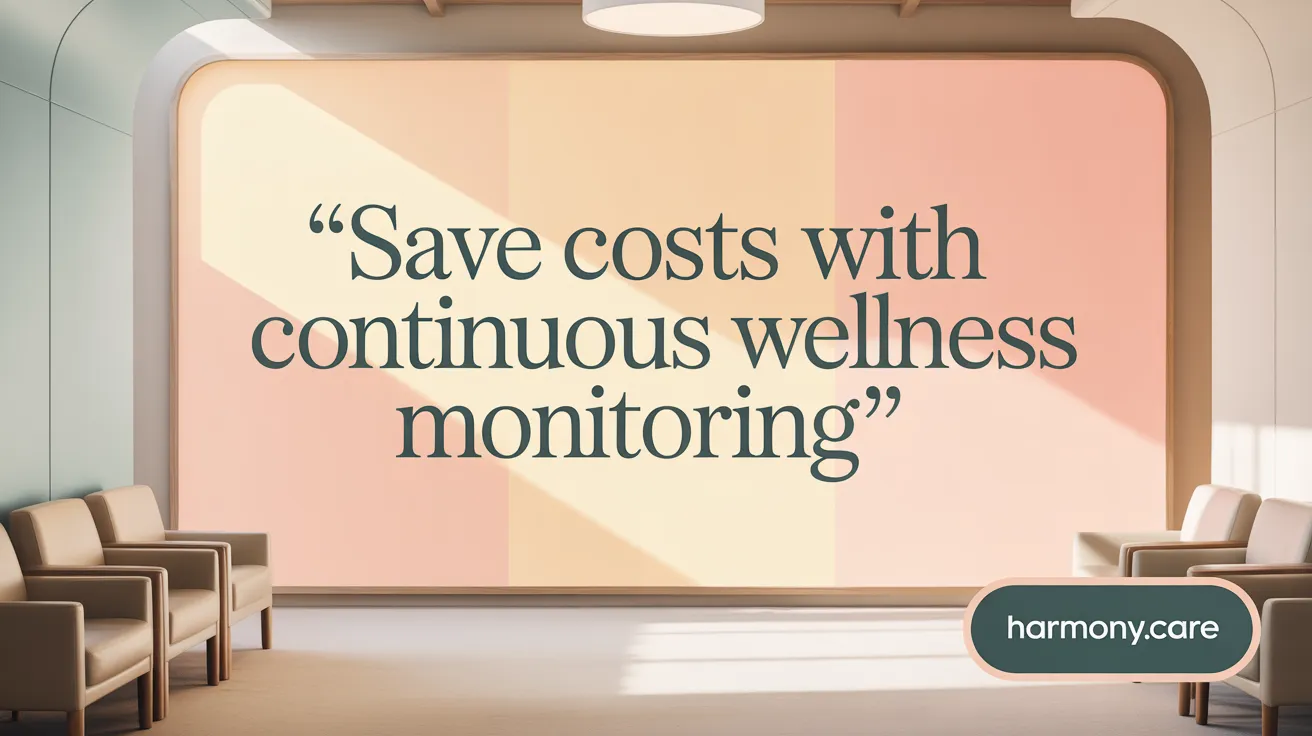
In what ways does continuous health monitoring contribute to cost reduction in healthcare?
Continuous health monitoring plays a crucial role in reducing healthcare costs through several avenues. One of the primary benefits is early detection of health deterioration. By continuously tracking vital signs and health metrics, healthcare providers can identify signs of worsening conditions promptly. This proactive approach helps prevent severe complications that often require costly interventions, such as transfer to intensive care units or emergency procedures.
Studies have demonstrated significant financial savings associated with continuous vital sign monitoring. For example, hospitals that implemented such systems reported potential annual savings of over $6.8 million in sizable hospitals. These savings mainly stem from a reduction in in-hospital cardiac arrests, rapid response activations, and shorter stays in wards and ICUs. By reducing the need for intensive treatments and prolonged hospitalizations, continuous monitoring helps conserve valuable healthcare resources.
Furthermore, RPM and telemonitoring decrease unnecessary hospital visits and admissions by enabling clinicians to manage issues remotely and efficiently. This not only lowers direct costs but also minimizes the burden on hospital infrastructure. The improved efficiency in healthcare delivery is complemented by better patient outcomes, further decreasing readmissions and emergency care needs.
Enhanced service delivery via remote technologies also translates into cost benefits. These tools improve clinical workflows, optimize staff utilization, and foster better resource allocation. As a result, healthcare systems can serve more patients effectively while controlling expenditures.
Patients also benefit financially from continuous health monitoring. By managing their conditions better at home and avoiding avoidable visits, they save expenses related to travel, parking, and taking time off work. This holistic approach ties directly into the broader benefits of continuous health monitoring, which include safety, efficiency, and economic savings.
| Cost Reduction Aspects | Specific Benefits | Examples |
|---|---|---|
| Early detection of deterioration | Preventing costly interventions | Avoidance of ICU transfers and emergency treatments |
| Reduced hospital visits and admissions | Lower in-hospital costs | Fewer emergency room visits due to early management |
| Workflow efficiencies | Streamlined clinical practices | Decreased staff overtime and improved resource use |
| Resource utilization | Optimal deployment of medical resources | Shorter stays and minimized diagnostics |
| Patient-related savings | Expenses saved on travel and missed work | Reduced financial burden on patients |
By integrating continuous health monitoring systems, healthcare providers can achieve substantial cost savings while enhancing patient safety and care quality. This approach exemplifies how preventive strategies and innovative technology can transform healthcare economics.
Continuous Monitoring in Hospital-at-Home Programs
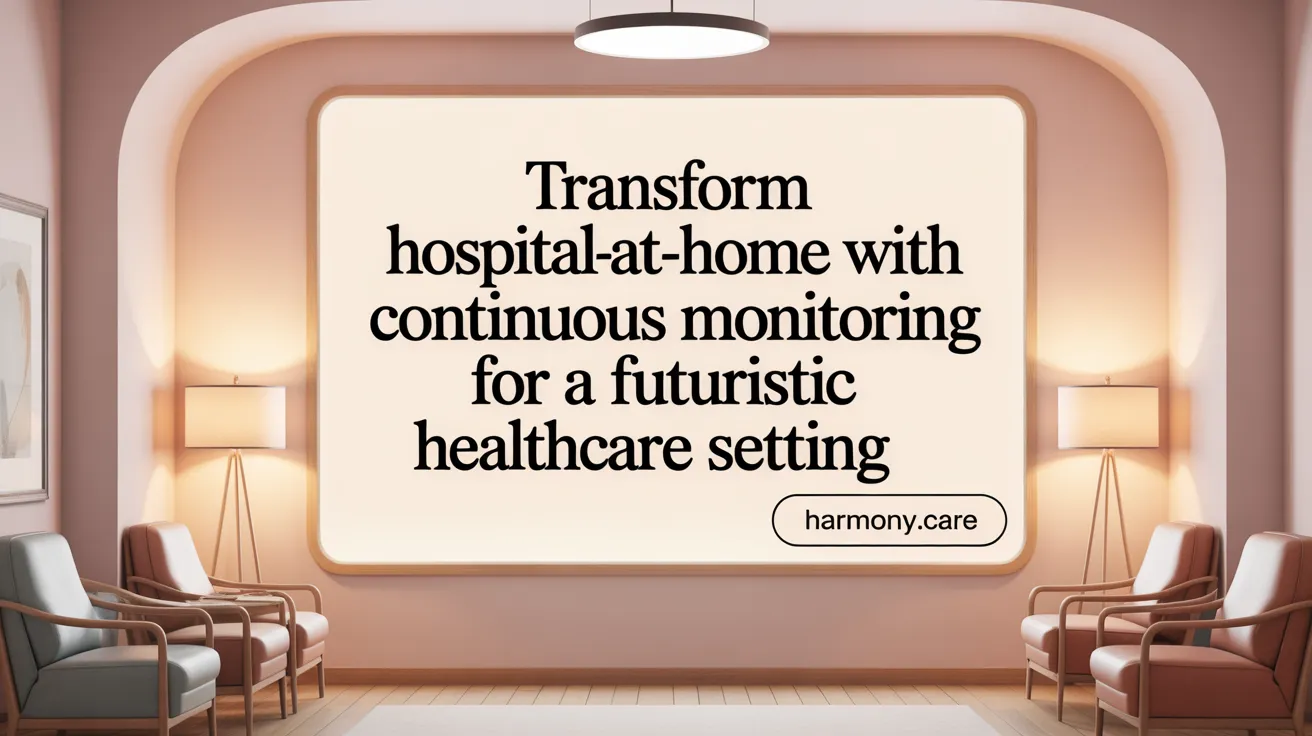
What role does continuous monitoring play in hospital-at-home programs?
Continuous monitoring is a vital component of hospital-at-home initiatives, enabling healthcare providers to track patient health outside traditional hospital settings in real time. Devices such as wearable sensors and mobile health monitors collect vital signs like heart rate, blood pressure, oxygen saturation, and other critical indicators.
This constant data stream allows clinicians to detect early signs of health deterioration or complications, often before symptoms become severe. For example, abnormal heart rhythms or oxygen levels can trigger automatic alerts, prompting immediate intervention.
Advanced technologies, including AI-driven early warning scores, enhance the predictive power of monitoring tools, supporting personalized care plans. These systems analyze trends over time, helping providers identify subtle changes that may indicate worsening health.
The benefits extend to patient safety through features like fall detection and remote observation, which are especially crucial for elderly or frail patients. Patients also gain access to their health data, empowering them for better self-management.
Overall, continuous monitoring improves clinical decision-making, reduces hospital readmissions, and enhances safety. It also streamlines resource use by allowing clinicians to prioritize patients who need urgent care, making hospital-at-home programs more effective and sustainable.
Technologies and Innovations Supporting Home-Based Monitoring
What technologies and innovations support home-based health monitoring?
Home-based health monitoring relies on a diverse array of advanced technologies and innovative systems designed to track and improve patient care outside of traditional clinical settings.
One fundamental component includes wearable sensors and connected devices. These tools, such as blood pressure monitors, pulse oximeters, and wearable ECGs, enable continuous collection of vital signs and health metrics during daily activities. For example, sensors embedded in wearable devices transmit real-time data to healthcare providers, aiding early detection of potential health issues and supporting proactive management.
Alongside active monitoring devices, a variety of passive sensors are integrated into smart home environments. These include bed sensors, carpet sensors, and water or electricity monitors that continually collect data on sleep patterns, mobility levels, hygiene habits, and household routines. Such sensors help maintain an ongoing picture of a patient’s health status without requiring direct interaction, improving safety and alerting caregivers to possible concerns.
Telehealth platforms and remote patient monitoring (RPM) systems form the backbone of digital health management. They facilitate the transmission of clinical data and enable virtual consultations, making healthcare more accessible. Data collected from connected devices is seamlessly integrated into electronic health records, allowing clinicians to analyze trends, adjust care plans, and make informed decisions promptly.
Innovations also extend to smart home safety and communication tools. Sensors for stove, water, and motion detection not only safeguard patients by preventing accidents but also help monitor household activities, ensuring an overall safe environment. Additionally, social and communication devices promote social engagement and streamline caregiver involvement, particularly beneficial for elderly or isolated patients.
Emerging advancements in artificial intelligence and data analytics supplement these technologies by enhancing incident detection, predicting health deteriorations, and personalizing interventions. AI algorithms analyze large datasets to identify patterns and anomalies, enabling earlier responses to potential emergencies.
While these innovations significantly enhance mobility, safety, and care effectiveness, ongoing research aims to optimize their application. Continued developments will likely improve the accuracy of remote assessments, expand predictive capabilities, and tailor interventions to individual patient needs, thus transforming home health management.
| Technology Type | Examples | Benefits | Additional Details |
|---|---|---|---|
| Wearable Sensors | ECG monitors, fitness bands | Continuous vital sign tracking | Used during daily activities for real-time data |
| Passive Sensors | Bed sensors, motion detectors | Non-intrusive health monitoring | Track sleep, mobility, household routines |
| Telehealth Platforms | Video consultation apps, data portals | Enhanced access to care | Support remote diagnosis and treatment planning |
| Smart Home Devices | Stove sensors, water leak detectors | Increased household safety | Prevent accidents and monitor environment |
| AI & Data Analytics | Predictive models, pattern recognition | Early detection and personalized care | Improve incident response and treatment customization |
By integrating these cutting-edge technologies into home healthcare strategies, providers can deliver safer, more efficient, and patient-centered care, ultimately leading to better health outcomes and higher patient satisfaction.
Enhancing Patient Safety and Care Quality with Continuous Monitoring
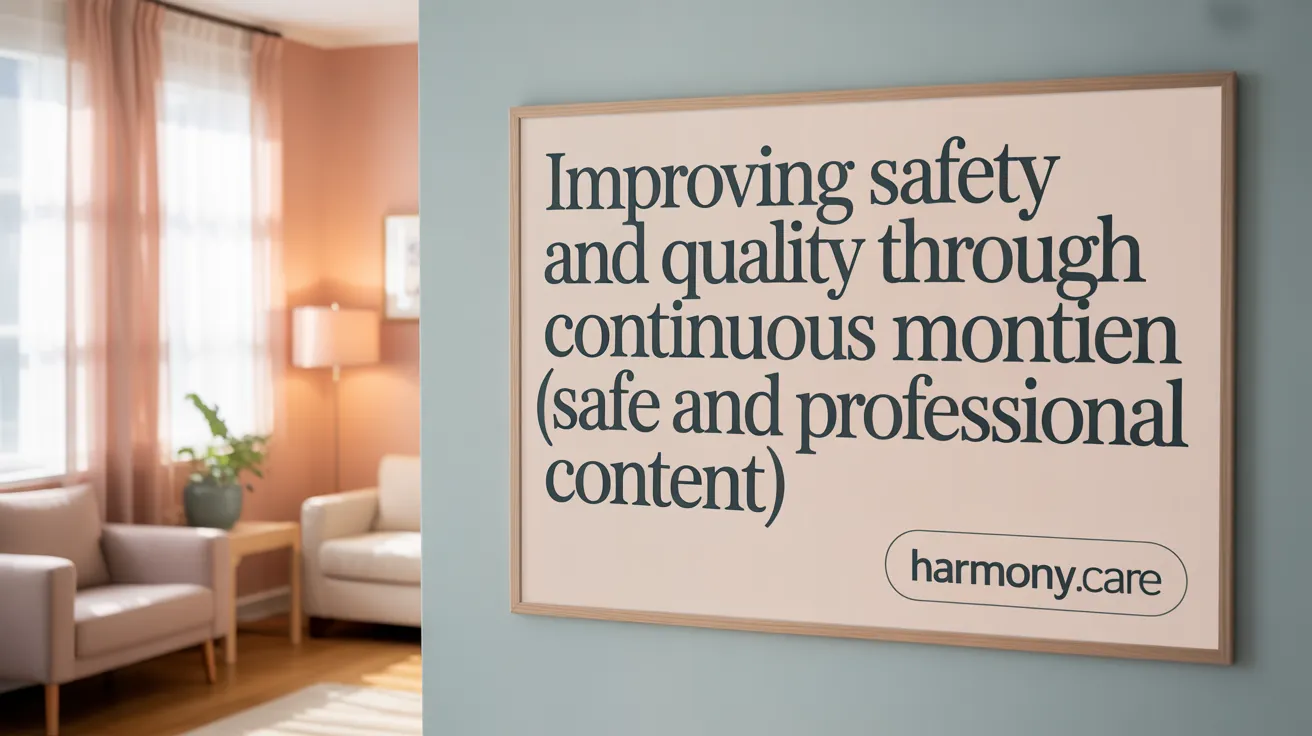
How does continuous monitoring improve patient safety and care quality?
Continuous monitoring plays a vital role in elevating patient safety and the overall quality of care. By providing real-time, precise data on vital signs and health indicators, clinicians can detect early signs of deterioration in patients' health status. This swift detection allows for prompt interventions, which are crucial in preventing serious adverse events, reducing ICU admissions, and shortening hospital stays.
The use of surveillance systems and wearable monitors supports this proactive approach. These tools continuously track vital parameters such as heart rate, blood pressure, oxygen saturation, and more. When abnormal patterns emerge, alerts notify healthcare providers instantly, enabling quick responses.
Incorporating Continuous Quality Improvement (CQI) methods further refines monitoring practices. By systematically analyzing data streams and outcomes, healthcare teams can identify areas for improvement, adapt safety protocols, and reduce errors. This ongoing refinement leads to safer care environments, better clinical decision-making, and higher patient satisfaction.
Ultimately, continuous monitoring fosters a preventive, efficient, and patient-centric healthcare approach. It ensures that potential issues are caught early, treatments are personalized, and patients receive care that minimizes risks while optimizing outcomes.
Improving Healthcare Efficiency and Management Through Remote Monitoring
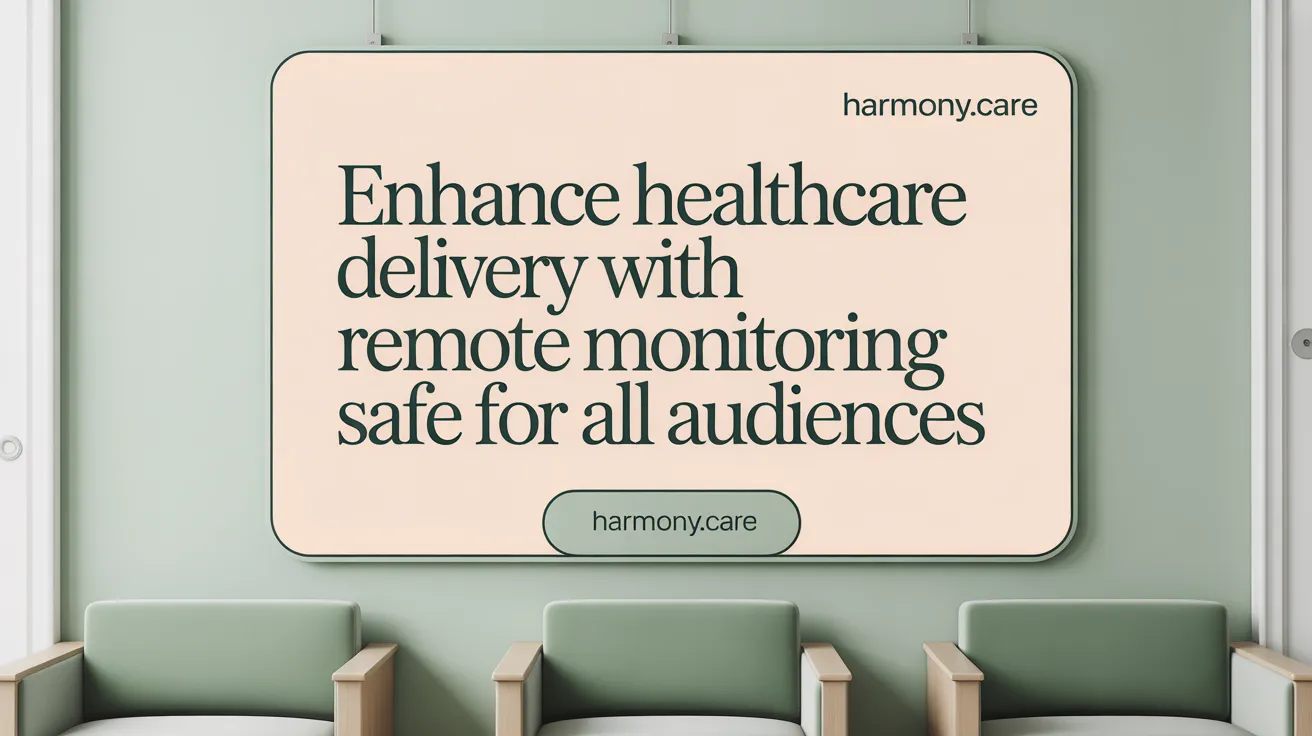
How does remote monitoring enhance healthcare efficiency and management?
Remote patient monitoring (RPM) transforms the way healthcare is delivered by enabling continuous, real-time data collection from patients outside the traditional clinical environment. Devices such as wearable sensors and mobile health apps gather vital signs, symptoms, and other health indicators, providing clinicians with immediate access to crucial information. This early detection of health issues facilitates prompt interventions, preventing disease progression and reducing the need for hospitalizations and emergency visits.
By streamlining data flow and reducing dependence on in-person visits, RPM optimizes resource utilization, allowing healthcare providers to focus their time and efforts more effectively. This approach also helps lower healthcare costs by decreasing hospital stays, diagnostic tests, and unnecessary procedures. Patients benefit from increased convenience and engagement, as they can monitor their health at home, access their data, and receive personalized education. This empowerment leads to improved adherence to treatment plans, especially for managing chronic illnesses like diabetes.
Furthermore, RPM enhances care coordination by integrating data into electronic health records, giving multiple providers a comprehensive view of the patient's health status. This integrated approach supports more tailored and effective treatment strategies.
While challenges such as data accuracy, privacy concerns, and technological barriers exist, the overall operational, clinical, and economic advantages of remote monitoring make it a vital component of modern healthcare. It offers a sustainable way to improve patient outcomes and optimize healthcare delivery worldwide.
| Aspect | Benefits | Additional Details |
|---|---|---|
| Real-time data | Early problem detection | Allows prompt intervention for deteriorating health |
| Workflow efficiency | Reduced hospital visits | Saves time and resources for providers |
| Resource allocation | Better use of staff and equipment | Supports proactive care management |
| Patient engagement | Increased satisfaction and self-management | Encourages patients to participate actively in their health |
| Care coordination | Improved communication among providers | Integrates data for holistic care planning |
This comprehensive approach ensures that healthcare systems become more responsive, cost-effective, and patient-centered, paving the way for better health outcomes and more sustainable services.
Conclusion: A New Era in Home-Based Healthcare
Continuous monitoring in home-based care heralds a transformative shift in how healthcare is delivered and managed. By enabling real-time tracking and early intervention, it significantly improves patient outcomes, enhances safety, and optimizes resource use while reducing costs. Supported by advancing technologies and integrated into innovative hospital-at-home programs, continuous monitoring empowers patients and providers alike with actionable data, greater connectivity, and personalized care pathways. As healthcare systems continue to evolve, embracing continuous monitoring will be essential to delivering high-quality, efficient, and patient-centered care outside traditional clinical settings. The evidence clearly supports that ongoing health surveillance at home not only improves clinical outcomes but also elevates the overall patient experience, making it a cornerstone of modern healthcare strategies.
References
- Benefits and Challenges of Remote Patient Monitoring as ...
- Continuous monitoring: transforming hospital-at-home
- The Importance of Regular Health Monitoring in Home ...
- The Top 13 Benefits of Remote Patient Monitoring
- Benefits of Remote Monitoring for Patients and Healthcare ...
- Benefits and Risks of Continuous Medical Monitoring
- 5 Benefits of Remote Patient Monitoring
